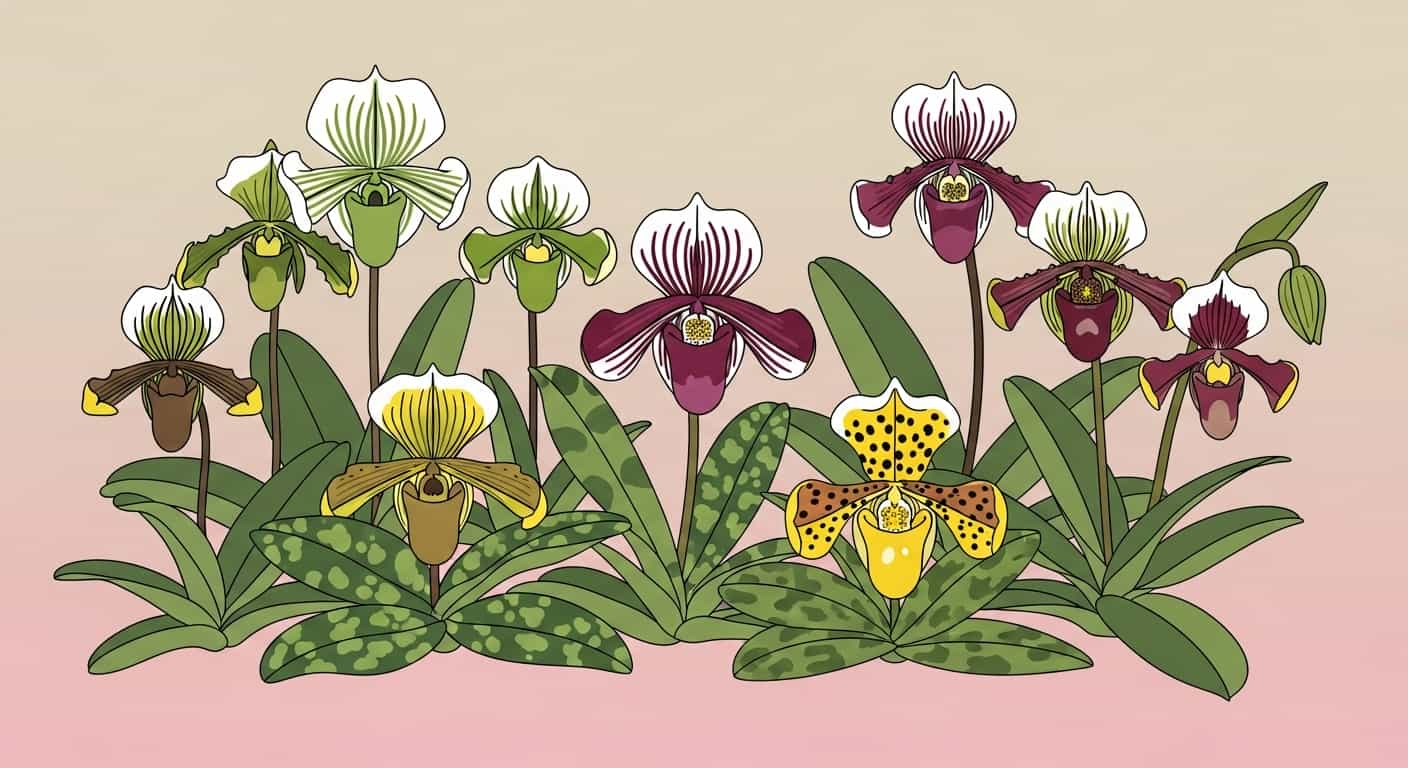Step into the enchanting world of Paphiopedilum orchids, a genus known for its extraordinary and whimsical blooms. Commonly called “Slipper Orchids,” these plants produce a single, waxy, and incredibly long-lasting flower featuring a unique pouch-like petal, or labellum, that resembles a tiny slipper. Their distinctive look, combined with their preference for lower light, makes them a fantastic choice for indoor growing and a perfect next step for beginner orchid enthusiasts.
This guide will introduce you to the unique charm of the Paphiopedilum. We’ll provide essential Paphiopedilum orchid care information tailored for newcomers, explaining why they are considered great Slipper orchids for beginners. With the right knowledge, you can easily cultivate these fascinating plants and enjoy their exotic beauty for months at a time.
What Makes Slipper Orchids So Unique?
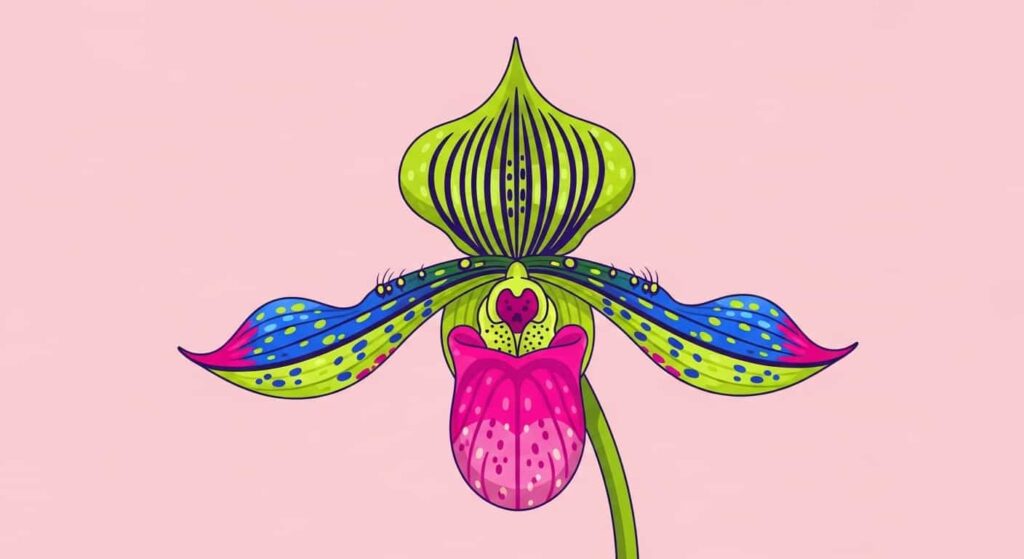
The most captivating feature of a Paphiopedilum is its flower structure. The pouch, or slipper, is not just for show; it’s a clever evolutionary adaptation for pollination. Insects are lured into the pouch by enticing scents and patterns. Once inside, they can only escape through a specific route that forces them to pass by the pollinia (pollen masses) and the stigma, ensuring pollination occurs.
Unlike the cascading sprays of Phalaenopsis or Oncidium orchids, Paphiopedilums typically produce a single flower per stem, though some multi-floral varieties exist. This solitary bloom has a commanding presence, showcasing intricate colors, stripes, and spots. The flower can last for two to three months, offering a long-lasting reward for your care.
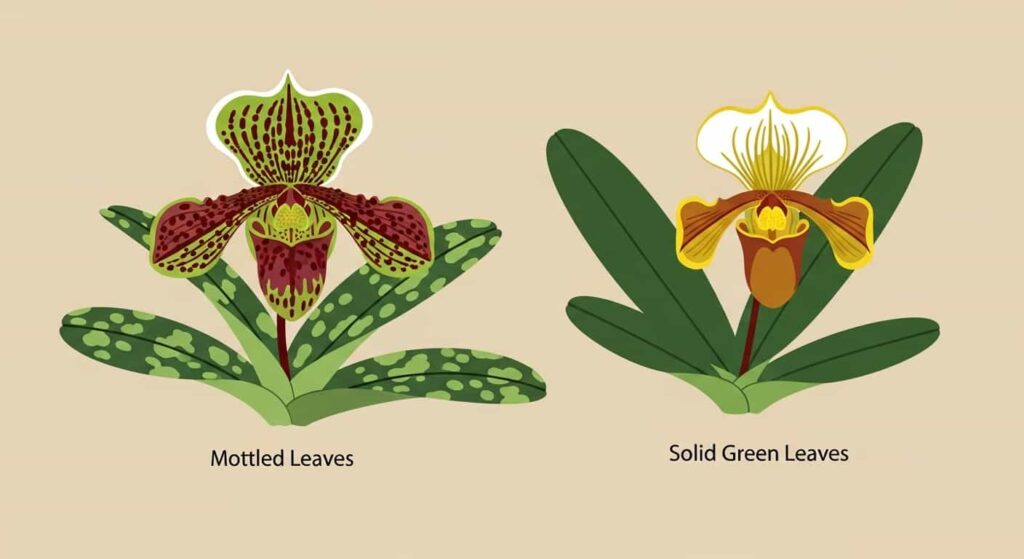
There are two main groups of Paphiopedilums that beginners are likely to encounter:
- Mottled-Leaf Varieties: These have beautiful, patterned leaves and prefer warm growing conditions.
- Solid Green-Leaf Varieties: These have plain green leaves and generally prefer cooler temperatures.
Essentials of Paphiopedilum Orchid Care
Paphiopedilums have a reputation for being the “houseplant” of the orchid world because their care can feel more intuitive to traditional gardeners. They are semi-terrestrial, meaning that in nature, they grow in the humus and leaf litter on the forest floor, not on tree branches. This makes their watering and potting needs slightly different from epiphytic orchids like Phalaenopsis.
Light: Low to Medium is Key
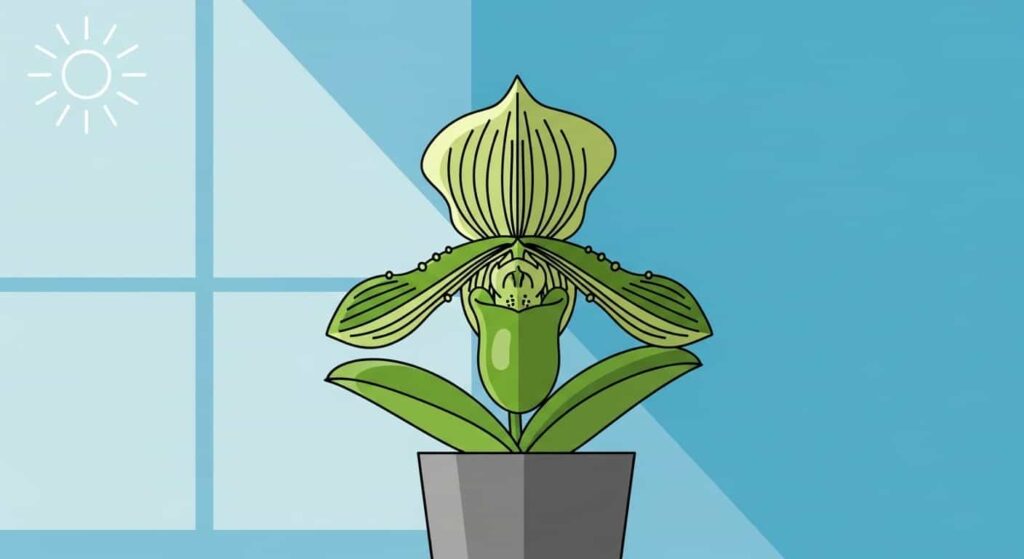
One of the best features of Slipper Orchids is their tolerance for lower light levels. This makes them ideal for homes and apartments that may not have access to bright, sunny windows.
- Ideal Location: They thrive in the same low to medium indirect light as Phalaenopsis orchids. An east-facing window is excellent. They also do well under artificial lights or in a north-facing window, where many other orchids would fail to bloom.
- Signs of Correct Light: Mottled-leaf varieties will show vibrant, clear patterns on their leaves. Solid green-leaf types should have a rich, medium-green color. If the leaves become yellowish, the plant is getting too much light.
- What to Avoid: Keep them out of direct, intense sunlight, which will quickly scorch their leaves.
Watering: Keep Consistently Moist
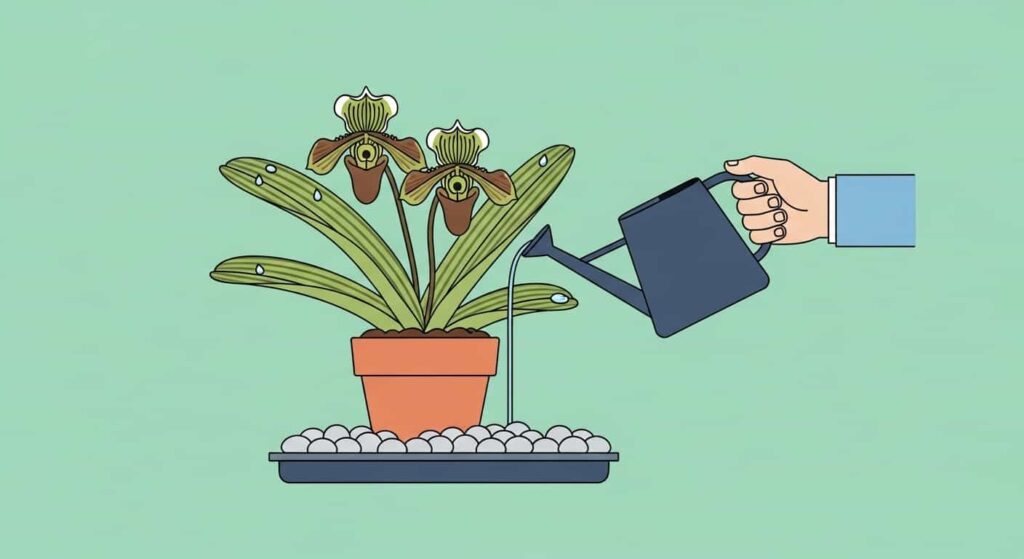
Unlike orchids with pseudobulbs that need to dry out completely, Paphiopedilums do not have significant water storage organs. Therefore, they prefer to be kept consistently moist.
- When to Water: The goal is to water just as the potting medium is approaching dryness, but never let it dry out completely. A good rule of thumb is to water once or twice a week, depending on your home’s temperature and humidity. The pot should feel lightweight, and the top inch of the mix should feel dry to the touch.
- How to Water: Water thoroughly with lukewarm water, allowing it to run through the pot and drain completely. This ensures the roots are hydrated and flushes out any mineral buildup.
- Humidity Needs: They enjoy high humidity, ideally between 50% and 70%. Placing the pot on a humidity tray or near a small humidifier is highly beneficial.
Paphiopedilum Care Tips: Potting and Fertilizing
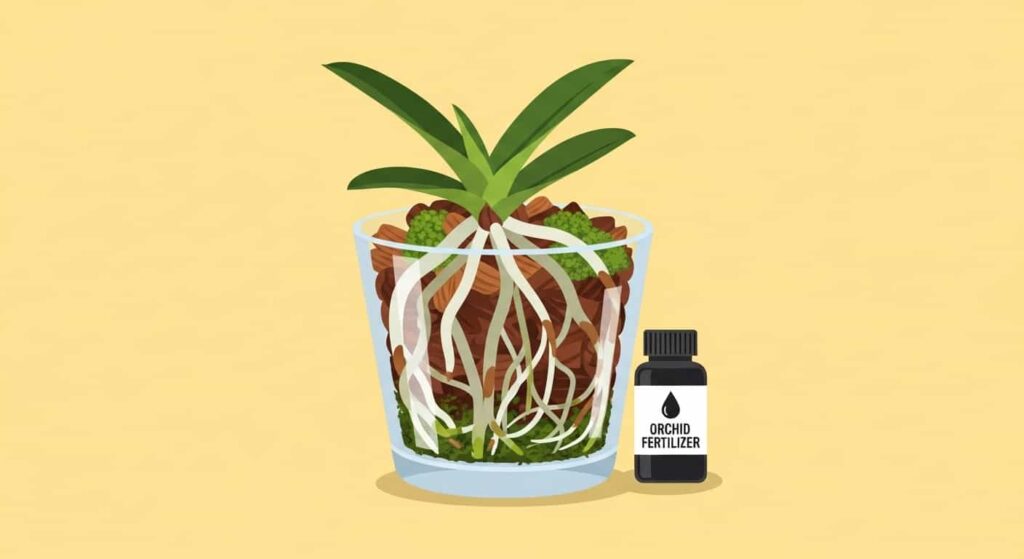
Providing the right foundation for your Slipper Orchid is crucial for its long-term health.
Choosing the Right Pot and Mix
Because they are semi-terrestrial, Paphiopedilums appreciate a mix that retains more moisture than a standard bark-based orchid mix.
- Best Potting Mix: A fine-grade fir bark mix that includes perlite, charcoal, and a small amount of sphagnum moss is ideal. This combination holds some moisture while still providing the necessary drainage and aeration.
- Potting: Slipper orchids have small root systems and do best in smaller pots. When repotting, only move up to a pot that is one inch larger in diameter. A pot that is too large will hold excess moisture and can lead to root rot.
- When to Repot: Repot every one to two years, as the finer mix can break down more quickly. The best time to repot is in the spring, after the plant has finished blooming.
Fertilizing for Healthy Growth
Paphiopedilums are sensitive to fertilizer salts, so it’s important to feed them lightly.
- Fertilizer Schedule: Use a balanced orchid fertilizer (like 20-20-20) at quarter strength with every watering during the spring and summer growing season.
- Reduce in Winter: Cut back on fertilizing to once a month during the fall and winter when growth slows.
- Flush Regularly: It’s very important to flush the pot with plain water once a month to wash away any accumulated fertilizer salts that could burn the delicate roots.
After the Bloom Fades
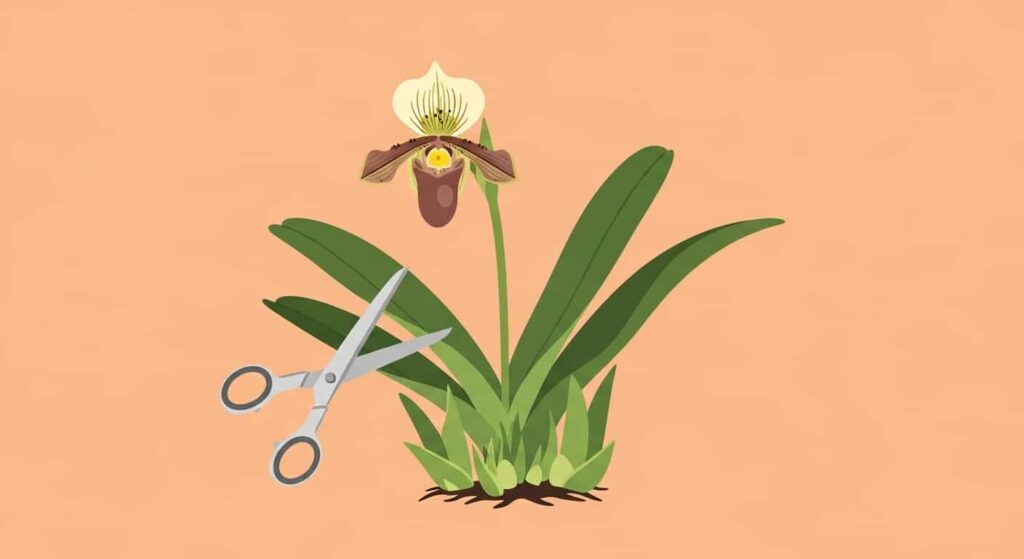
Each growth, or “fan,” on a Paphiopedilum will only bloom once. After the flower has faded, you can cut the flower stem off at the base of the plant. The old fan will not flower again, but it will continue to provide energy for the plant to produce new growth.
The plant’s energy will then be directed toward maturing new fans at its base. These new growths will develop over the next year, and once mature, they will produce their own flowers. A healthy, multi-fan plant can produce several flowers a year as different growths mature at different times.
Perfect Slipper Orchids for Beginners
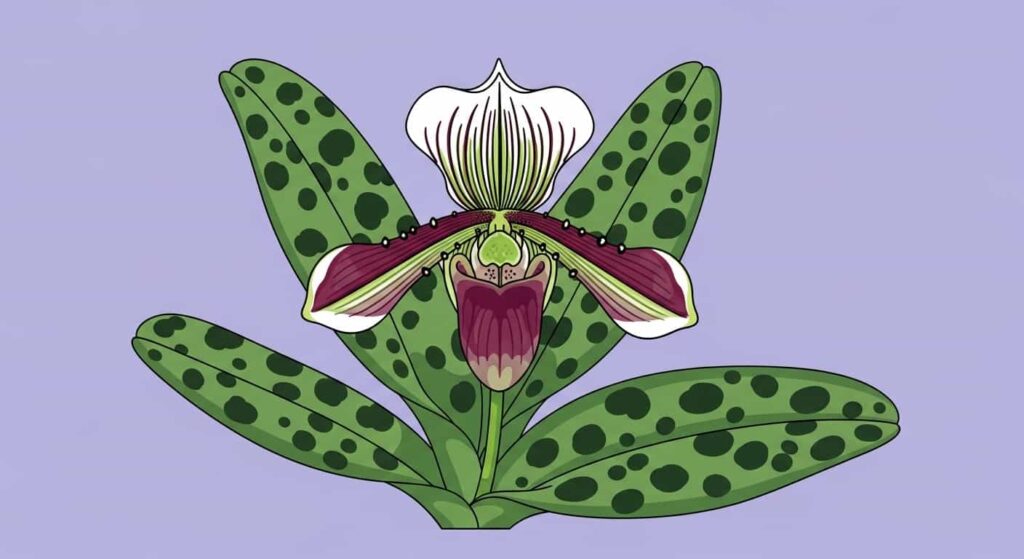
If you’re new to Slipper Orchids, starting with a mottled-leaf hybrid is often recommended. They are generally more tolerant of the warm temperatures found in most homes and are very forgiving. Look for classic, easy-to-find hybrids like Paphiopedilum Maudiae.
Paphiopedilums are captivating plants that add a touch of the exotic and unusual to any collection. Their low-light tolerance and straightforward care make them an accessible and rewarding choice for beginners. By providing consistent moisture and a good quality potting mix, you can easily succeed with these charming orchids and enjoy their singular, stunning blooms year after year.

